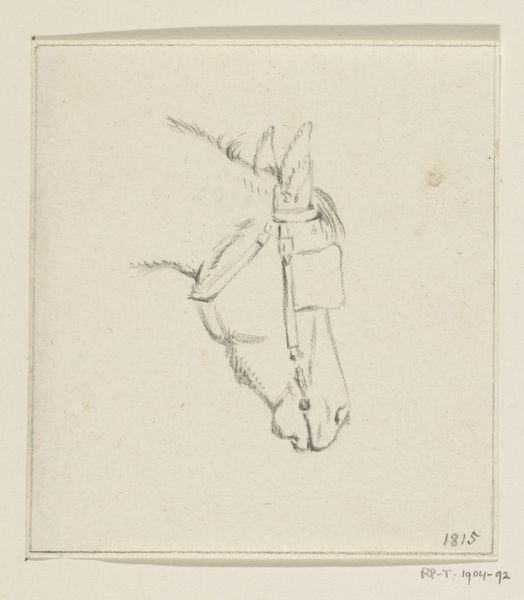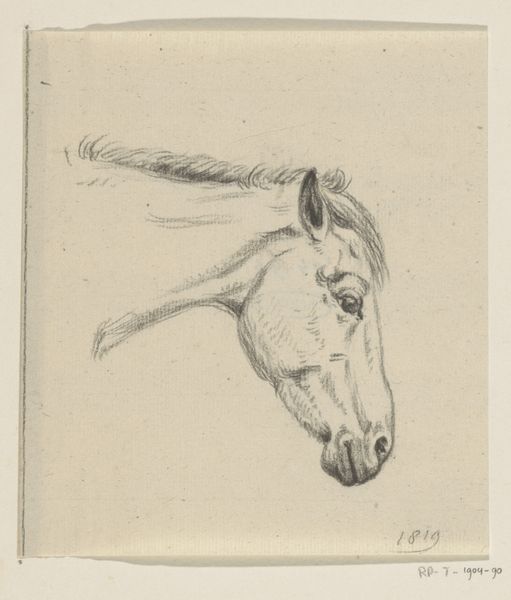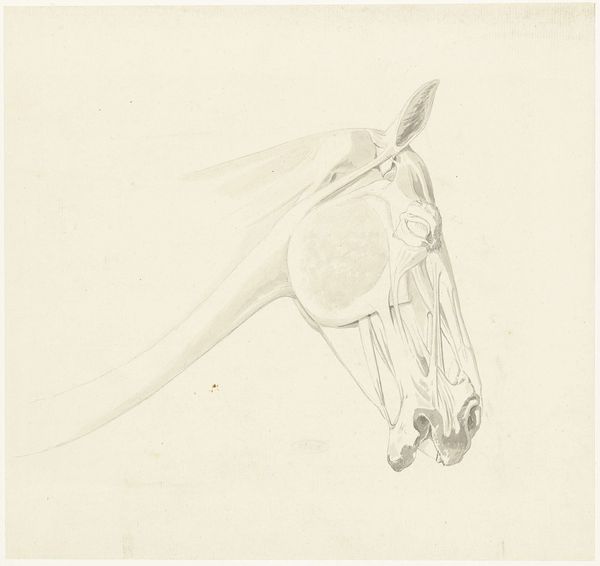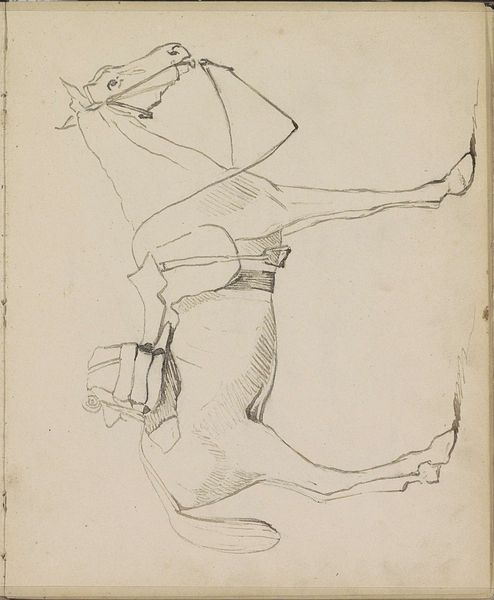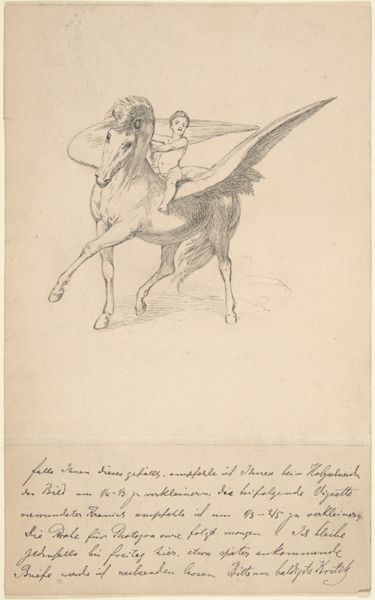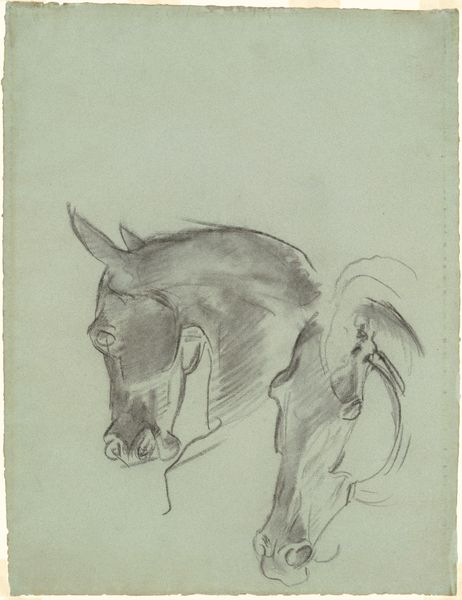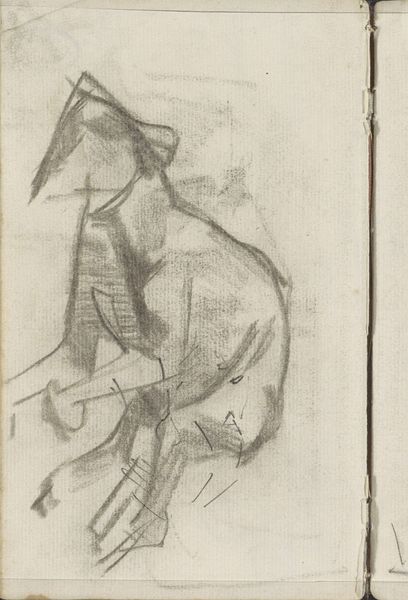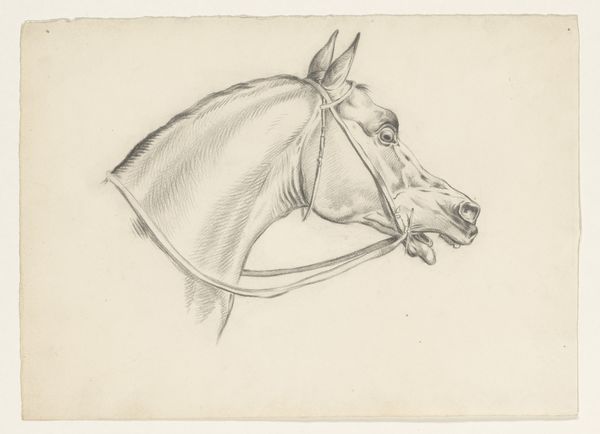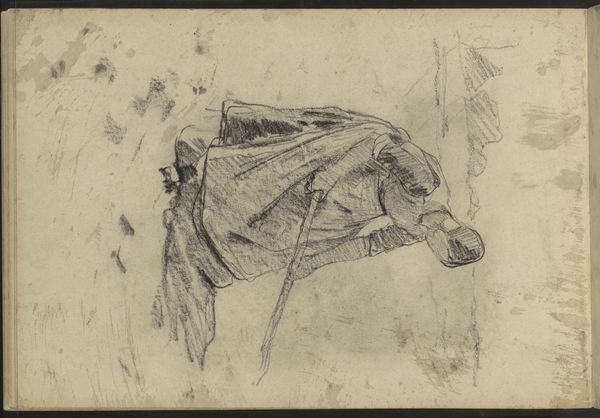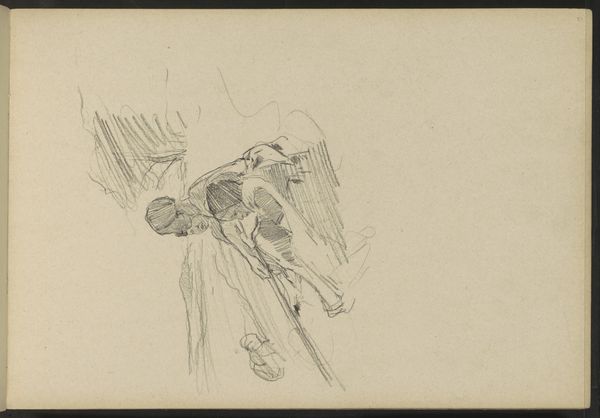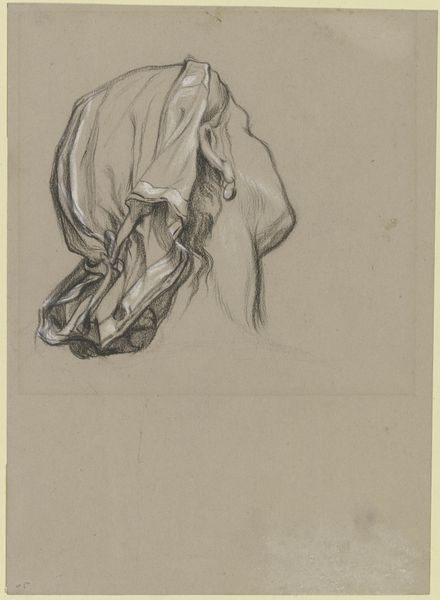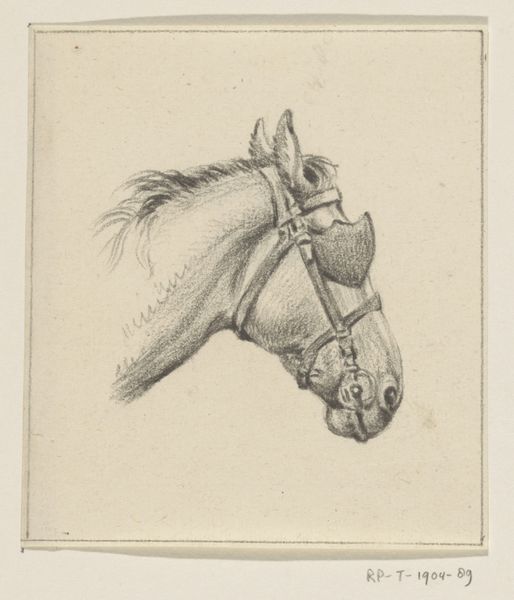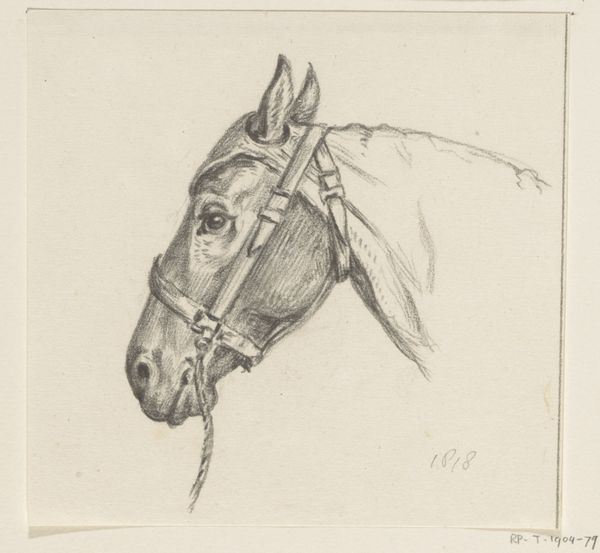
drawing, pencil, graphite
#
portrait
#
drawing
#
light pencil work
#
sketch book
#
figuration
#
personal sketchbook
#
idea generation sketch
#
sketchwork
#
ink drawing experimentation
#
romanticism
#
pen-ink sketch
#
pencil
#
horse
#
line
#
graphite
#
sketchbook drawing
#
storyboard and sketchbook work
#
sketchbook art
#
realism
Dimensions: height 138 mm, width 115 mm
Copyright: Rijks Museum: Open Domain
Curator: Here at the Rijksmuseum, we have "Head of a Horse with Blinders, Facing Right," a graphite drawing created in 1817 by Jean Bernard. It's rather small. What's your initial read? Editor: Somber. Elegant, but constrained. It feels like the artist is inviting us to contemplate the weight of duty or the quiet strength required to face a narrow path. Curator: Exactly! Look closely at Bernard's rendering of the leather blinders. They aren't just functional; they almost suggest a deliberate limitation of the horse’s vision. What impact do you think that has, beyond just a design choice? Editor: Immediately I’m thinking about the material processes of horse tack production at that time and the ways this kind of control spoke to human-animal relations, reflecting an emerging culture obsessed with optimization and the domination of natural resources through agriculture. This piece is small, but it’s heavy with meaning. Curator: I see that, and for me, the softness of the graphite brings an undeniable intimacy to the drawing. It’s not just about animal subjugation but something far more subtle: empathy. You can almost feel the gentle hand of the artist capturing not just the form but something deeper. Maybe, even, Bernard's acknowledging how limited *we* are. Editor: And that specific kind of graphite lends a sheen almost like worn leather. You almost feel like if you touched it, some of it would smudge right off on your hands! Speaking of which, how would an everyday person during that period be using graphite? Is it a costly material? Curator: By this point, it was being produced in specialized workshops, becoming more widely available. But that sheen really underscores your point! He chose the materials perfectly for the emotional heft he was trying to get across! Editor: Yes, the sheen definitely makes you contemplate both its use and constraints. Fascinating piece to consider the intersection of art and industrial influence during that period. Curator: Right? It reveals unexpected dimensions within such a compact space. A lot like this chat.
Comments
No comments
Be the first to comment and join the conversation on the ultimate creative platform.
